Definition
Degenerative disc disease is not actually a disease but a term used to describe the normal changes in your spinal discs as you age. Spinal discs are soft, compressible discs that separate the interlocking bones also known as vertebrae that make up the spine. The discs act as shock absorbers for the spine, allowing it to flex, bend, and twist. Degenerative disc disease can take place throughout the spine, but it most often occurs in the discs in the lower back lumbar region and the neck cervical region.
- The changes in the discs can result in back or neck pain and/or:
- Osteoarthritis, the breakdown of the tissue cartilage that protects and cushions joints.
- Herniated disc, an abnormal bulge or a breaking open of a spinal disc.
- Spinal stenosis, the narrowing of the spinal canal, the open space in the spine that holds the spinal cord.
These conditions may put pressure on the spinal cord and nerves, leading to pain and possibly affecting nerve function.
Epidemiology
Degenerative disc disease is fairly common and it is estimated that at least 30% of people aged 30-50 years old will have some degree of disc space degeneration, although not all will have pain or ever receive a formal diagnosis. The pain is frequently caused by simple wear and tear as part of the general aging process. It can also be as a result of a twisting injury to the lower back.
Types
Degenerative disc disease is a condition characterized by damage to the intervertebral discs that can result in pain and stiffness.
There are three different types of degenerative disc disease, which influence the symptoms a patient may experience. Pain will typically spread to the neck, shoulders, arms, hands, legs, and/or feet.
Cervical Degenerative Disc Disease
- Cervical degenerative disc disease is the second most common type of degenerative disc disease and will manifest anywhere along the cervical spine. The cervical spine consists of 7 vertebral bones; C1, C2, C3, C4, C5, C6, and C7.
- Patients with cervical disc degeneration may experience pain that flares up from time to time. Patients may also suffer from a stiff neck and altered nerve sensations in the neck and between the shoulder blades. Disc degeneration in the neck may lead to a disc herniation and other spinal conditions that can put pressure on the spinal cord and nerve roots.
Lumbar Degenerative Disc Disease
- Lumbar degenerative disc disease is the most common type of degenerative disc disease. Disc degeneration will appear in the lumbar spine; the L1, L2, L3, L4, and L5. Lumbar degenerative discs are common because the lower back region carries the bulk of your weight and endures a lot of stress and strain every single day.
- Lower back pain is common with lumbar disc degeneration. The condition is also likely to cause altered nerve sensations, such as numbness, tingling, and muscle weakness, in the lower back. Radiating pain into the buttocks, legs, and feet may also appear as symptoms.
One of the most common causes of sciatica, pressure on the sciatic nerve that causes radiating pain, is lumbar degenerative disc disease.
Thoracic Degenerative Disc Disease
- Thoracic degenerative disc disease is the degeneration of the thoracic spine, which consists of 12 thoracic vertebrae numbered T1 to T12. Disc degeneration in the thoracic spine, or mid-back at the level of the ribcage, is rare. However, when it does occur, back pain is often located around the site of the degenerated disc.
- Degenerative disc disease can occur anywhere along the spine and in more than one location. The degeneration of one disc can negatively affect others causing them to also be more susceptible to weakening.
- Disc degeneration cannot be reversed, but with conservative treatments, a patient may be able to find pain relief. When conservative treatments, such as physical therapy and medications, fail, surgical procedures may be recommended.
Risk factors
Age is the biggest risk factor, but some other factors can speed up the process of degeneration.
These include:
- Obesity
- Strenuous physical work
- Tobacco smoking
- An acute or sudden injury, such as a fall
Degenerative disc pain can start when a major or minor injury leads to sudden and unexpected back pain, or it can present as a slight back pain that gets worse over time.
Causes
There is one prominent cause of degenerative disc disease, and that is the natural effects of aging on the intervertebral discs in the spine. However, certain medical factors can exacerbate and intensify degenerative disc disease, including:
- Smoking
- Lack of exercise
- Obesity or carrying excess weight
- Improperly lifting heavy objects
- Making repetitive, strenuous movements
- A sudden, serious injury, such as one that may result from a fall, car accident or high-impact sport
Osteoporosis, herniated discs, spinal stenosis and other spinal complications can surface as a result of degenerative disc disease. If you believe you may be at risk for degenerative disc disease, speak with your doctor about how to maintain long-term spinal health. By practicing proper precautions and making certain lifestyle changes, you can reduce your risk of contracting premature spine-related difficulties while proactively warding off issues later in life.
Symptoms
Symptoms are most commonly concentrated in the low back or neck, depending on where the degenerated discs are. Common symptoms include:
- Pain that ranges from nagging to severe and disabling
- Pain that affects the low back, buttocks, and thighs
- Pain in the neck that may radiate to the arms and hands
- Pain that is worse when sitting
- Pain that gets worse when bending, lifting or twisting
- Pain that lessens when walking and moving
- Pain that lessens with changing positions often or lying down
- Periods of severe pain that come and go, lasting from a few days to a few months
- Numbness and tingling in the extremities
- Weakness in the leg muscles or foot drop may be a sign that there is damage to the nerve root
Complications
Certain complications of degenerative disc disease require immediate medical attention. These include pain that continues to worsen (especially over a short period of time),
- Loss of bladder or bowel control,
- Disabling pain,
- Numbness,
- Pain,
- Tingling, or weakness in one or both legs.
However, it is rare that this condition leads to conditions that are more serious.
Diagnosis and test
Degenerative disc disease is diagnosed with a medical history and physical exam. Your doctor will ask about your symptoms, injuries or illnesses, any previous treatment, and habits and activities that may be causing pain in the neck, arms, back, buttock, or leg.
If a patient presents with symptoms associated with degenerative disc disease, the surgeon may order the following tests:
- X-rays – although X-rays cannot show soft tissue like discs, they provide details of the bone structures in the spine.
- Magnetic resonance (MR) imaging – this type of scan provides a detailed image of discs, allowing surgeons to see how the nerves and spinal canal space are affected by degenerative disc disease.
- Computed tomography (CT) scan – provides a detailed image of bone structures in the spine and is a great option for those patients who cannot undergo MR scans (for example, those who have a pacemaker or who have specific types of metallic implants)
Treatment and medications
All doctors agree that getting the back pain under control – no matter the source – requires exercise to increase the strength and flexibility of muscles that surround and support the spine. Exercising increases blood flow to the back, which nourishes joints and muscles with oxygen and nutrients while clearing away destructive inflammatory waste products.
Treatment options to go along with physical activity and exercises to increase back strength include:
- Physical therapy
- Medications: nonsteroidal anti-inflammatory drugs (ibuprofen, naproxen sodium), pain relievers (acetaminophen)
- Surgery: artificial disc replacement, spinal fusion
- Heat and cold therapy
- Spinal mobilization
Prevention of degenerative disc disease
While you cannot control the natural aging process of the spine, there are certain lifestyle choices you can make that can improve your overall spine health and reduce your risk of developing a degenerative spine condition. These lifestyle habits include:
- Maintain a healthy weight to reduce unnecessary pressure on the spine.
- Limit alcohol and tobacco use because it decreases circulation to the discs and causes dehydration. Additionally, constant alcohol consumption can lead to weight gain and inactivity.
- Reduce high-impact sports like football and other contact sports that cause the spine to rapidly bend and snap.
- Exercise regularly to strengthen the core muscles around the spine so they can help support the body’s weight and movement.
 Diseases Treatments Dictionary This is complete solution to read all diseases treatments Which covers Prevention, Causes, Symptoms, Medical Terms, Drugs, Prescription, Natural Remedies with cures and Treatments. Most of the common diseases were listed in names, split with categories.
Diseases Treatments Dictionary This is complete solution to read all diseases treatments Which covers Prevention, Causes, Symptoms, Medical Terms, Drugs, Prescription, Natural Remedies with cures and Treatments. Most of the common diseases were listed in names, split with categories.
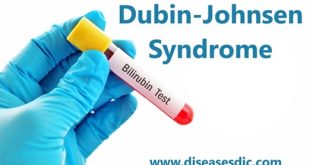
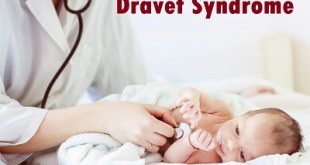

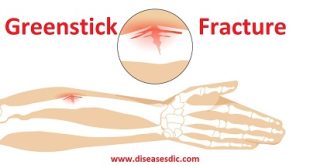
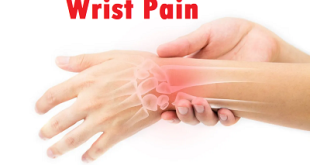
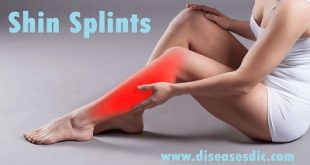
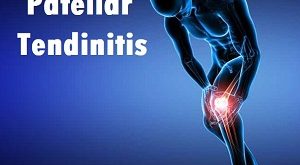

useful and educative article for those with basic knowledge and interest in general health.
plz also add about the hydrocephalus..
Quite an insightful and educative piece. More of these types of articles relating to diseases associated with aging would help old persons take proactive measures in handling their health challenges that has to do with old age.
This really helped .
I have been in so much pain.
I thought it was just from my knee.
But turns out this is going on as well.
I was diagnosed with this 10 years ago.
I’m only 44 years old. And have really been in pain to the point of crying every day and night. Some times I think my Dr. knows what’s going on but want tell me. He says not to read up on this stuff because it will just scare me?
Good piece.Pls help us more on lower back which arose from gym.Am 39 and I have taken several x-rays including MRI.
Please consult a doctor.
This is an eye opener for men especially, so continous exercice will keep all the bones tender and younger. Its your choice.
inform us of the required medical treatment for example Zulu, gluten
kindly guide me.
can a degenerative disc disease develop because of calcium and vit D deficiency.
the main cause of degenerative disc disease is the natural aging process of the spine.
This information is helpful to me. The left side of my body, my head, neck, back are degenerating. I have burning and heating sensation and feeling of wounds in the left side of my head, neck, shoulder, side, lumber.
please consult a doctor.
I found this to be very helpful, having had 5 operations, unfortunately I am still in pain. my feet and ankles always swell even wen I am just walking around the house. These symptoms are not mentioned in your diagnosis, please can u advise me as to why this keeps happening??
It may be due to urea accumulation in the joints. But please consult a doctor as soon as possible.
over the past few days I am suffering from a vibration sensation in my bottom and the top of my leg. I am very worried about this,and I am a little worried to see my doctor. please could you advise me on what could be the cause of this.
I have had over 58 Orthopedic procedures following a near fatal car accident in 1983, followed by 2 other accidents and multiple injuries that cover me from head to toe. Thanks to the changes in recent laws, the medication I have taken for the past 13 years, that gave me a life worth living have been cut to much that I am now basically bed ridden. My Doctor has no interest in helping me. I am sure he simply wants me to go away & leave him alone in part because I am a liability to him now.
Please go to any rehabilitation center for life care.
yes I have every one of the system that you described above. I have lost 60 pounds got off of one of the pain meds that was causing me to gain weight can degenerated disk disease make someone like me who has GAD worse? that’s a generalized anxiety disorder I do live on pain medications that my doctors are basically taking from me at this point and I don’t know what to do about it but my main question I guess would be the GAD and can it cause you to have urinary problems as well do you know?
Please consult an orthopedic surgeon.
Hi very educational piece. I was diaognised and currently on pain management medication and physiotherapy and hydrotherapy sessions..
please show the cervical exercise for
relief
Consult a physiotherapist.
i have degenerative dease low back L5 and chronic legs pain and getting worse at my age going 90 yrs i use cane lose balance. i always urinate 6 to 7 time at night sleep i wonder how can improve
Please consult a neurologist or spine surgeon.
sir my pain controlling so I used tremadol Gabapentin and mostly dexomaxon steroid this steroid is giving so much relief but it causing vitamin D3 and after one again is coming tell the specified drug regard to l5 and s1 plz help me
Please consult a specialist to rectify asap.
Sir, my leg pain continuing even if medication in taking. Please suggest physical exercises, what type of exercises to be done
Please consult a physiotherapist for appropriate prescription.
What about drivers who drive long distances and Pilots,are they not at risk too?
Professions involving prolonged sitting, such as long-distance truck drivers and pilots, may pose a risk for degenerative disc disease (DDD) due to the extended mechanical stress on the spine. To mitigate this risk, individuals in these occupations should prioritize ergonomic practices, including proper lumbar support and regular breaks for stretching. Incorporating exercises that enhance core strength and flexibility is crucial for spine health. While these occupations may increase susceptibility, DDD can affect individuals across various lifestyles, emphasizing the importance of preventive measures and seeking professional advice.